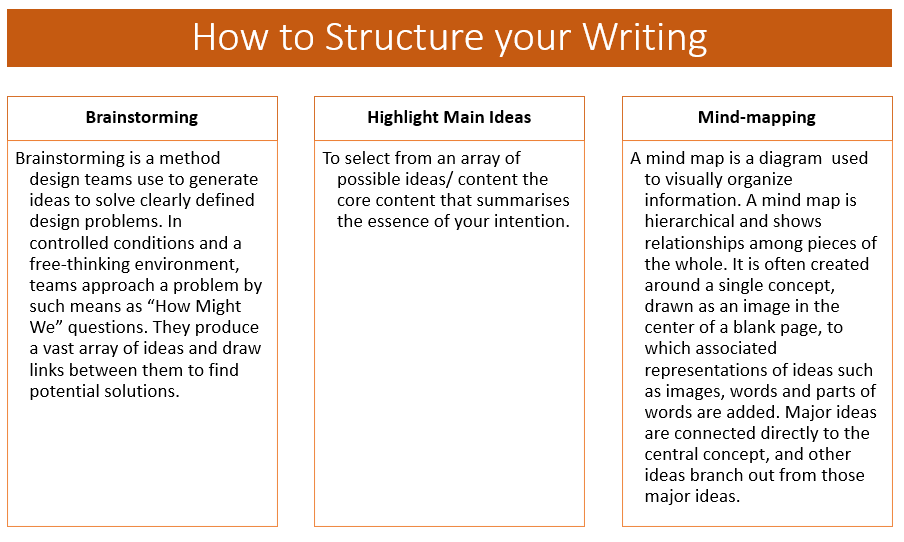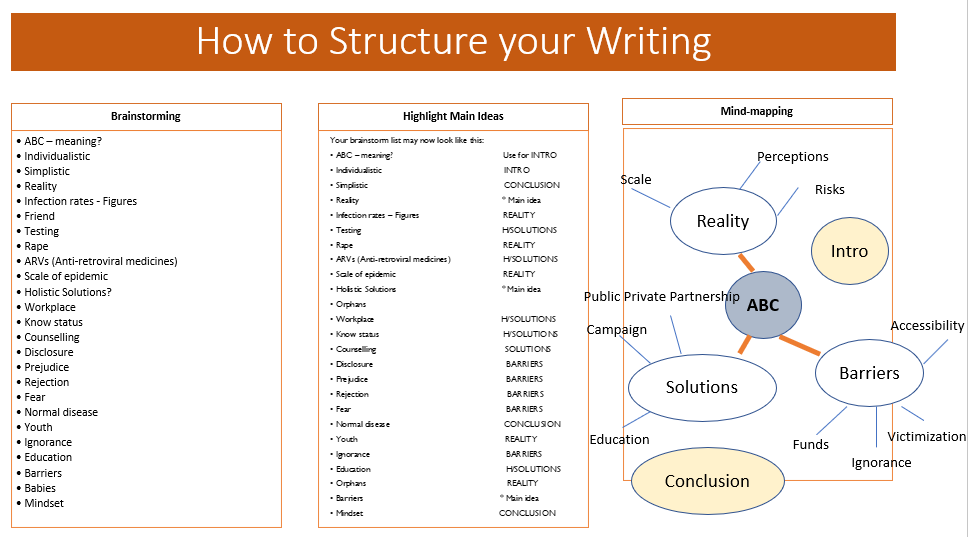We are now going to turn briefly to structuring writing in order to convey a message clearly.
Consider the following. A medical aid organisation has posted a new membership card to each member, together with a sticky plastic covering.
The following instructions for covering the card came in the letter:
Please use the attached plastic sticker to cover the card. Cut out the card along the dotted line. First, you should make sure you sign it before you cut it and cover it with plastic. This card is proof of your membership. If your signature is not sealed under the plastic cover, the card is not valid.
Are these instructions clear? If you follow them, will you end up with what you need?
Notice that the first instruction tells you to cover the card with a plastic sticker. Then it tells you that you should first cut it. Then it instructs you to sign it. Near the end it explains what the card is for. Lastly, it warns you of the importance of signing the card before covering it with plastic – but after you may already have invalidated it.
Of course, it is advisable to read instructions through completely before starting a task, but even so, the instructions should be presented in the exact order in which the steps of the task are to be done. If you followed these instructions as they were given, you would have stuck the plastic on before you had signed it – and the card would be invalid.
We have considered how important it is for a paragraph to be well structured in order to provide a clear message to the reader. Now, we must look at how we can work at producing a longer piece of writing so that it is well structured, in order for its message to be clear to the reader.
When producing a piece of writing, you need to plan carefully by using similar techniques: brainstorming, highlighting, mind-mapping.
We will revise these techniques, by planning a letter to a community newsletter. Your local community newsletter has been running a column on the HIV-AIDS epidemic. They recently ran an informative article on the ABC programme (Abstain, Be faithful, Condomise).
While reading the article, you felt strongly that although the programme has value, it is an inadequate response to the epidemic. You decide that you want to write a letter to air your point of view.
How do you set about planning your letter?
We will go through 3 basic steps in planning the letter:
- Brainstorming - to mobilise ideas.
- Highlighting – to sort and sift those ideas.
- Mind-mapping – to organise and begin shaping the letter.

Step 1: Brainstorm
Jot down all the thoughts you have on the subject. In this process, remember:
- Go back to the original article to ‘spark’ your memory and ideas.
- Then set it aside and let your own ideas come.
- Be brief (one-word notes are best, use abbreviations if you want to).
- Write ideas as they come.
- Do not ‘censor’ yourself – anything goes (you can eliminate later).
- Once you have brainstormed a range of ideas, you can start looking at them more critically.
Step 2: Highlight MAIN IDEAS and Cluster Others
- From the random points that you have jotted down, select the ones that you think are key points.
- Now ask yourself, what key concepts are these points representing? Divide all the points into these concept clusters.
- Then highlight a key point that you could use in your introduction. It should relate to the topic and your purpose/ intention.
- Highlight any point that you could use in your conclusion e.g., Simplistic
- If you think a point is not relevant to any of the main ideas, discard it.
Step 3: Mind-Map
This is the stage when we start to plan the shape of our argument. The points produced by the brainstorm are the materials with which we work, but how we put these points together is as important as the ideas themselves. We can work in these stages:
- At the centre of the mind-map is our topic. Why? Because everything we write must link with that topic – we must “stick to the point”.
- The highlighted key points as our main ideas are each set out linked to our topic. It is important to put the main ideas in a logical
- How do we select Main Ideas from our list? The Main Idea must be one that can include other ideas. Some points are broader categories; others are examples that fall into those categories. E.g., holistic solution is a category, which includes examples such as education, testing, ARVs, counselling etc.
- The other points from the brainstorm are then examined to see what they can add to the Main Ideas. If relevant, they are clustered (grouped) under the relevant main point. Any point that is not relevant to any main idea is discarded. In this way, you will sift through your list of ideas, classifying your material as you do so. Once the plan has been drawn up as a mind-map, it can be written out in full. Each Main Idea will form a paragraph and the points will be written out in full sentences.
Example:
Back to the example of the letter to the community newsletter.
This is how it might pan out.

From the Introduction in our mind-map above, we might develop the following paragraph:
Introduction- ABC
Previous article Meaning of ABC Individualistic.
Your newspaper recently ran an article on the ABC Programme as a response to the AIDS epidemic. The programme encourages people to change their sexual practice by firstly A - abstaining, secondly B - being faithful to one partner and thirdly C - condomising with every sexual encounter. While I agree with encouraging people to be responsible, this seems a highly individualistic way to deal with it.
Now, take the Main Idea of Reality from the mind-map and write it out in full sentences.
Your paragraph will not be the same as this, but should include all the points listed in the mind-map, and should be logical and clear.
"The reality is much more complicated. We have a huge epidemic with people being infected at an alarming rate. The highest rate of infection is among youth, and the message of ABC has failed miserably there. Sadly, too, there are many cases of rape in our society; increasingly it seems on very young children, even babies. It is clear that infection does not always take place where the ABC choices are likely to be made."